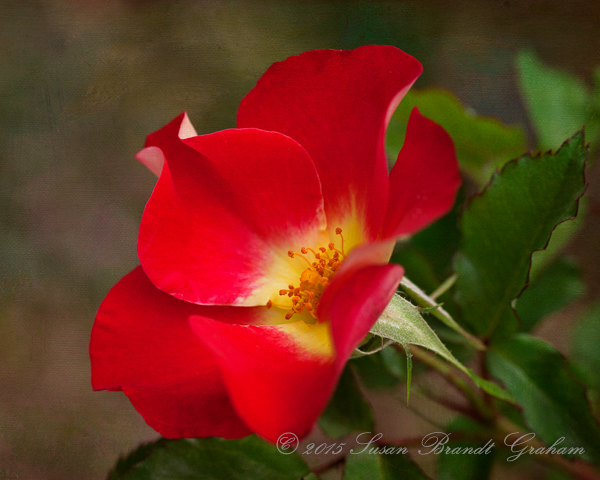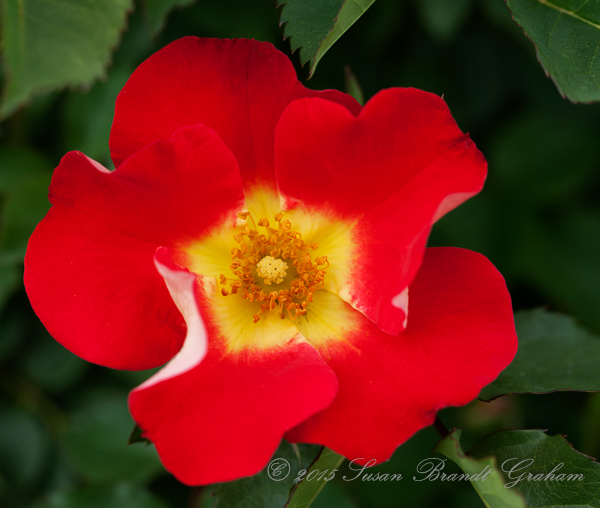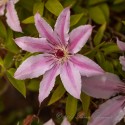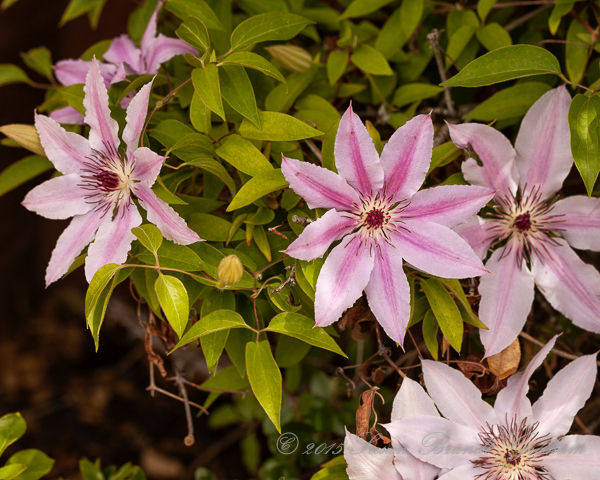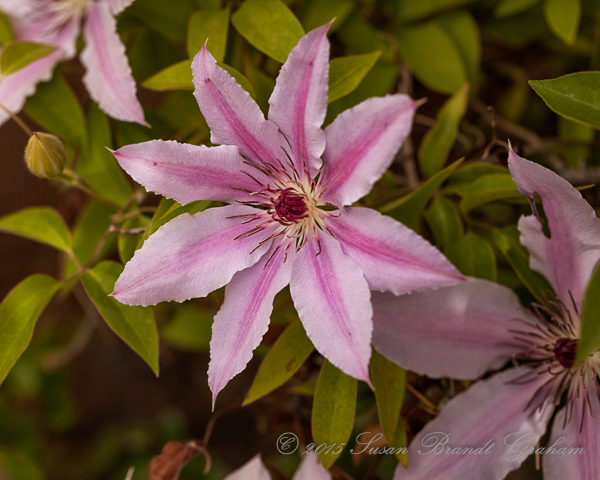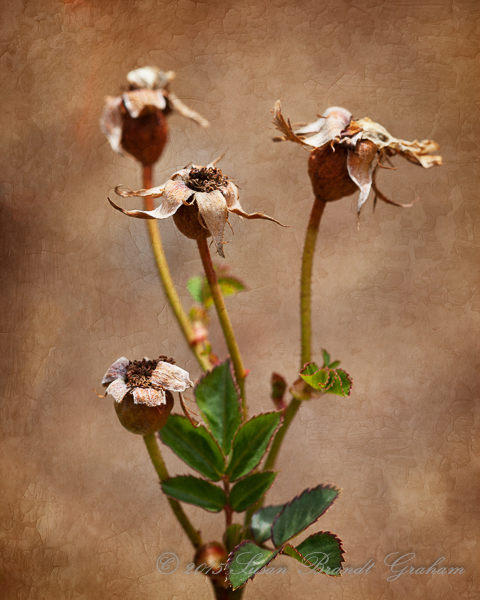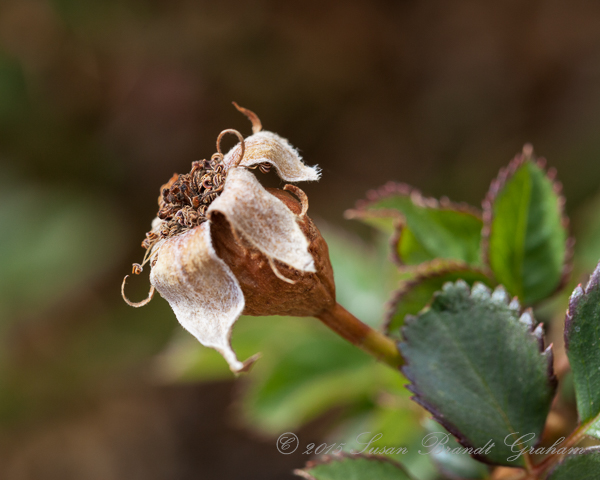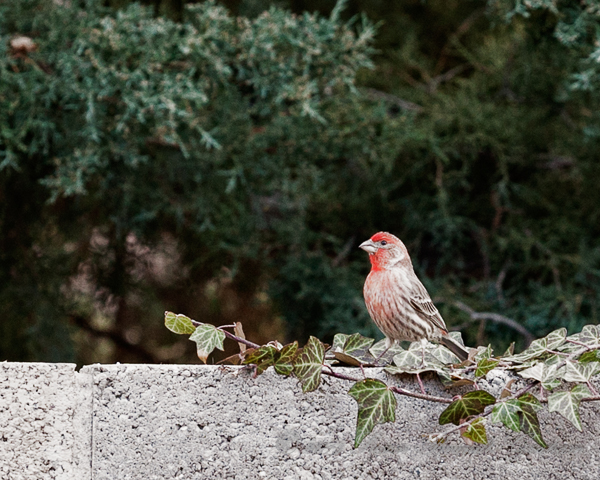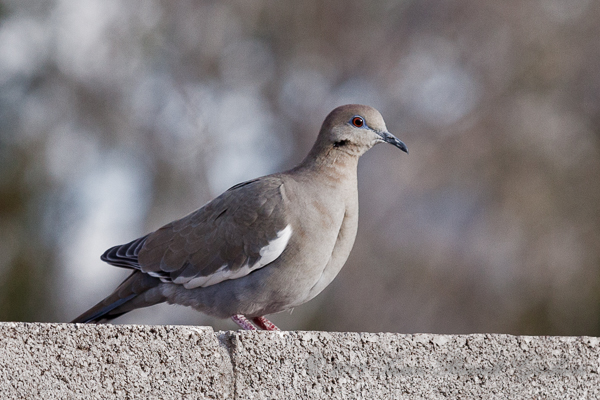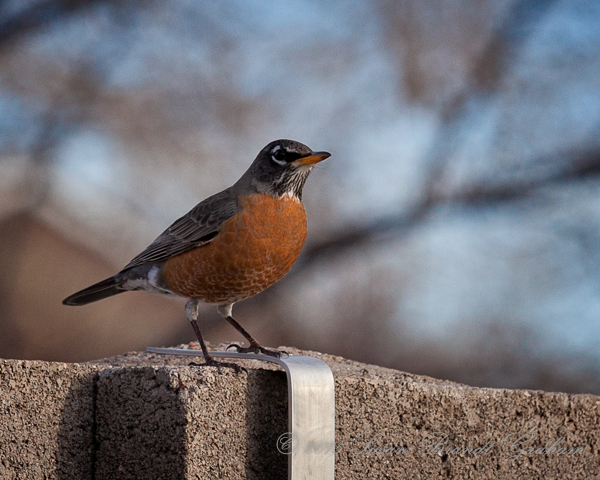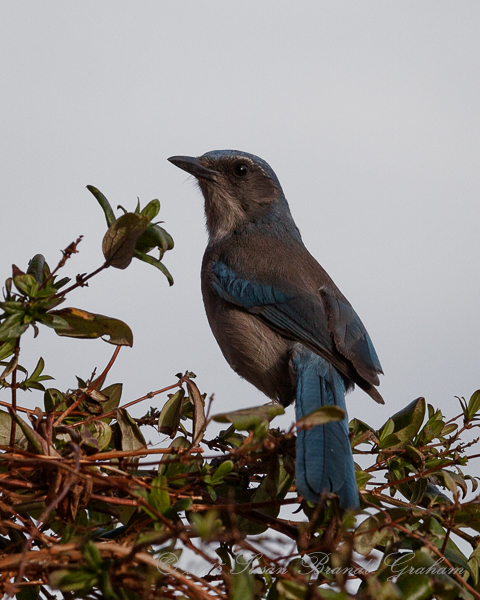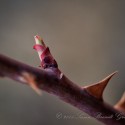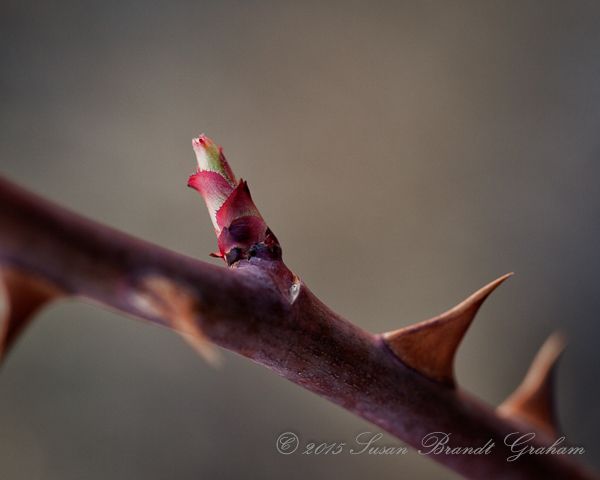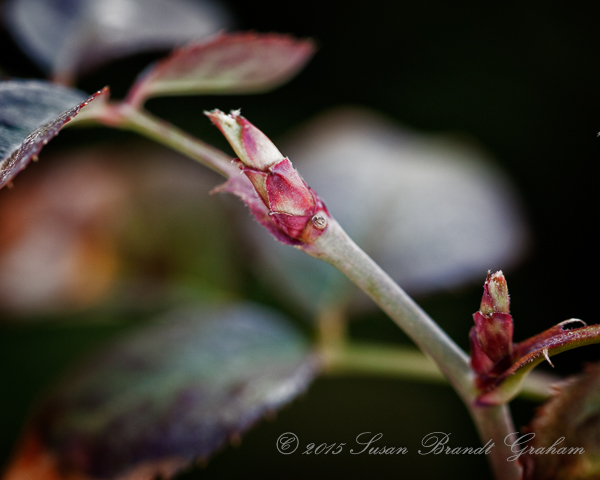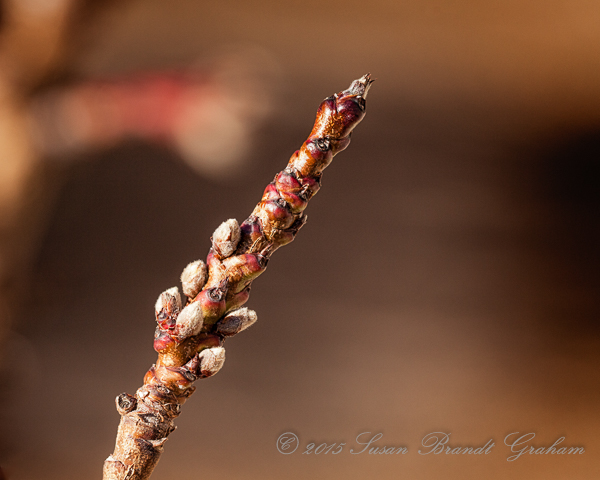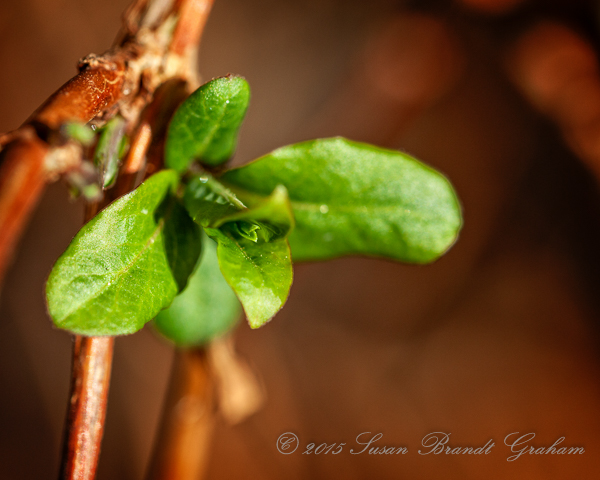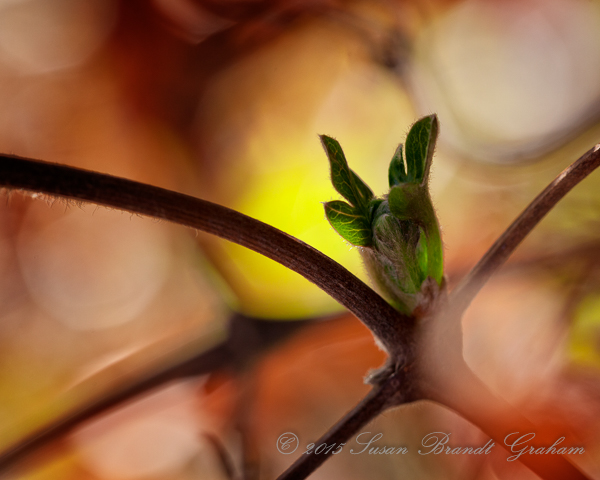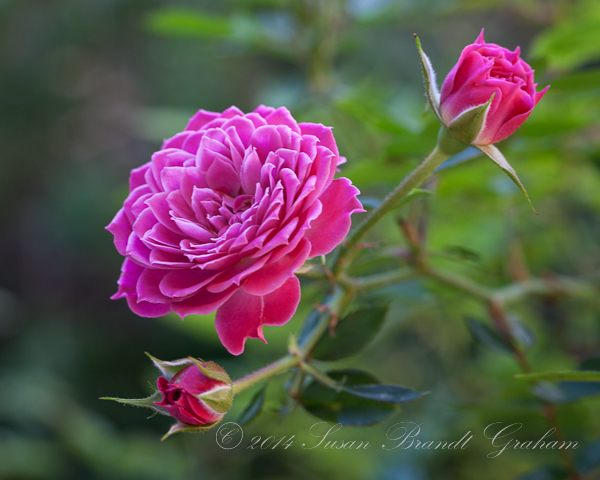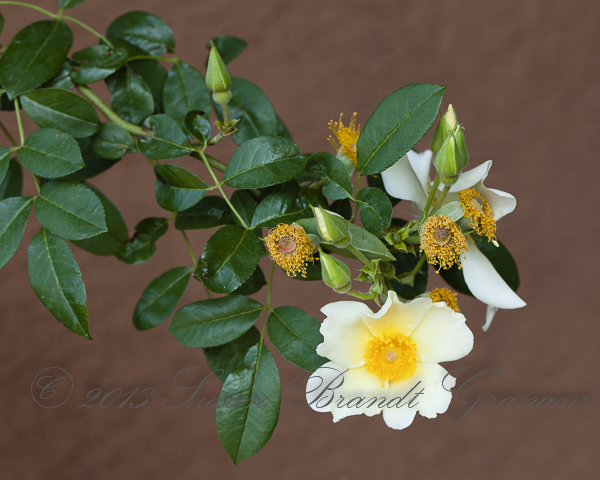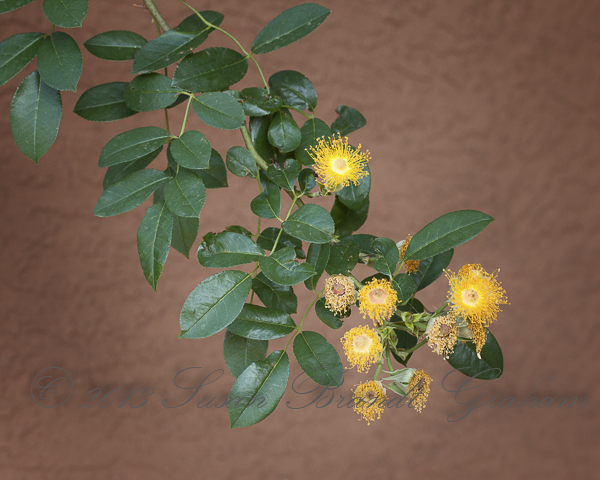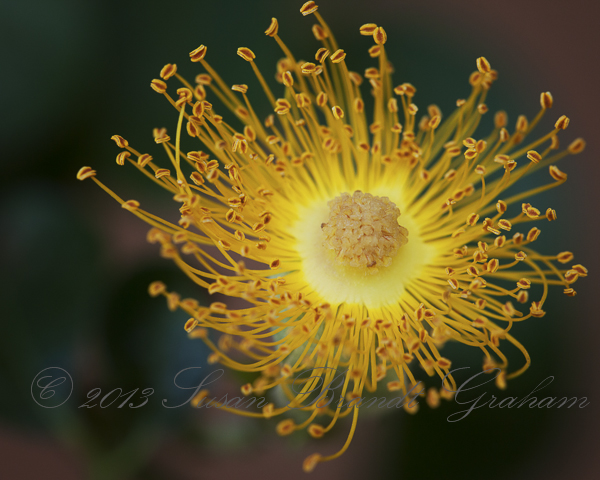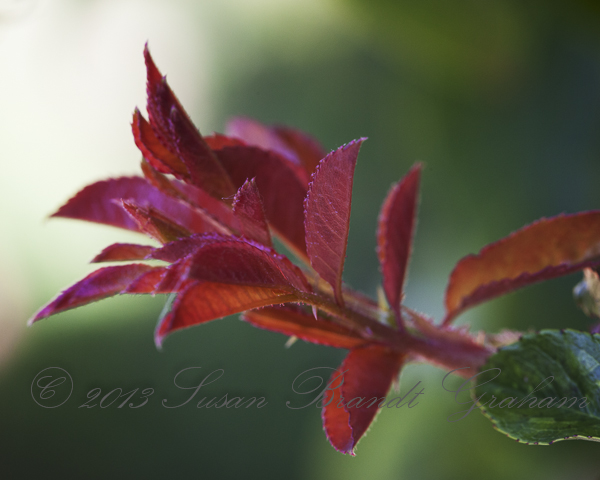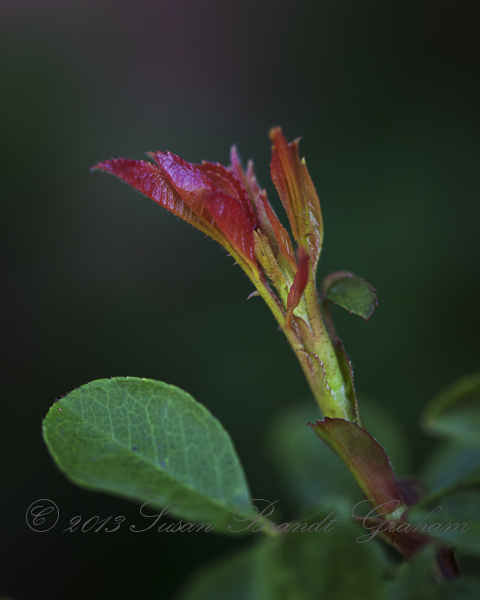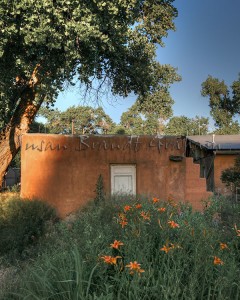Ice after Snow – Not So Good for the Garden!
Ice this afternoon followed the snow this morning. I was happy to wake up to five inches of snow. We have needed precipitation for so long, that even I was delighted to see snow. Some images from this morning can be seen at my photography blog.
Although the temperature did not warm to above freezing at my house today, some of the snow on the roof began to melt, and icicles formed at the edge. They began to drip droplets onto some of my roses, where that water immediately formed ice. This is not something you want to see happening.
Some of you who have followed this blog from its beginning may recall the damage done to my old garden rose, ‘Mermaid,’ when a 22 inch snow began to melt, refreeze, melt, refreeze, until ‘Mermaid,’ was pulled off the wall and laid out across my patio by the weight of the ice. It is why I now do something that most people would say I should not do – I prune ‘Mermaid’ back in late fall. It has proven to be a good strategy for this particular rose in this one particular spot.
(Some images of ‘Mermaid’ and the damage may be seen at the following links. Those images were taken with an old Nikon Coolpix, the first digital camera I owned. Thus, the odd settings that those of you who know your way around cameras will note.
Saga of Mermaid, Part 3
Saga of Mermaid, Part 4
Saga of Mermaid, Part 5
Saga of Mermaid, Part 6
Saga of Mermaid, Part 7
Saga of Mermaid, Part 9 )
Here in the high desert, Albuquerque, we do not prune until late March and preferably early April. That is because of the threat of late freezes. When I do prune this year, I will have damage from today to remove. At the time of this writing, it appears that ‘St. Patrick’ will have the most damage.
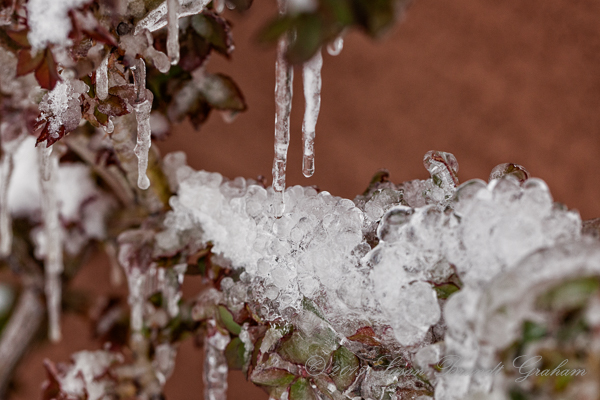
‘St. Patrick’ with ice and icicles
You see two different ice formations on ‘St. Patrick.’ The icicles are clear, and are not that big of a threat at that size. But, you can also see in this image a branch that was bent by the weight of the ice, and then droplets continued to drip from the icicles on the roof, weighing down the branch even more. Here’s a hint – you cannot shake ice off a branch like that, in the way you can shake snow off. That branch is broken by the weight of the ice. Those of you who are rosarians will understand that I had really wanted ‘St. Patrick’ to have a really good year in 2015. It may yet; it is far too early to tell for sure. But this ice is potentially a major setback for this rose bush.

Icicles on Veterans’ Honor
The icicles at this size are not a major problem for ‘Veterans’ Honor.’ However, this image shows why we do not prune until later. The leaves you see are last year’s leaves. But, if you look closely, you see new growth (red) appearing along the cane. This new growth will not survive the freezing temperatures. That is okay; there are still a lot of places for new growth when spring does arrive. Many places for new growth would have been removed had this hybrid tea been pruned. I’m not a bit worried about this rose, at least as of today. Who knows what weather lies ahead? But, for today, it is okay.
Continue reading →
Like this:
Like Loading...


